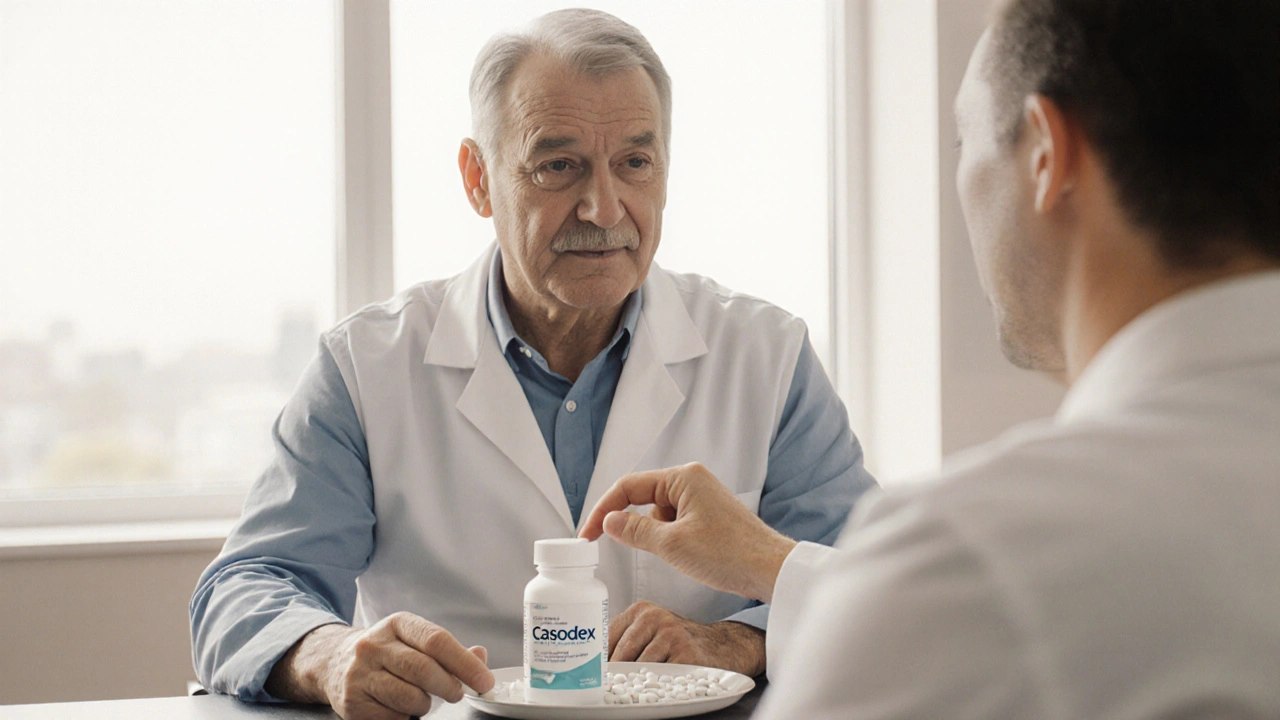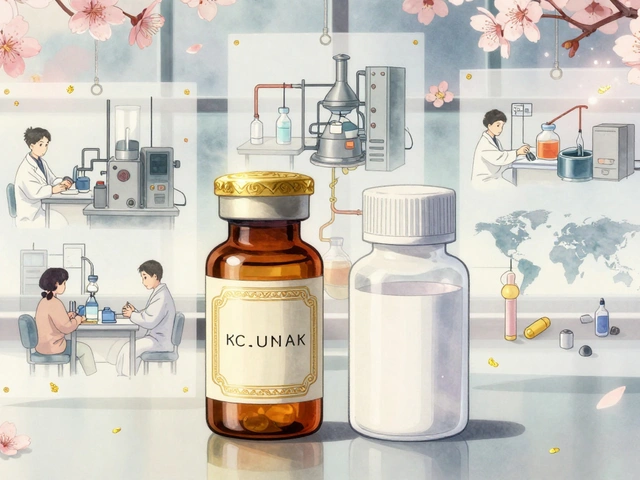Antiandrogen Comparison
When diving into antiandrogen comparison, the process of evaluating drugs that block or suppress the effects of male hormones (androgens) on the body. Also known as anti‑androgenic drug analysis, it helps clinicians and patients choose the right medication for conditions like prostate cancer, androgenic alopecia, or hirsutism.
Key drugs, receptors, and clinical contexts
One major player in this arena is Finasteride, a 5‑alpha‑reductase inhibitor that reduces dihydrotestosterone levels. It’s often paired against Dutasteride, which blocks both type I and II 5‑alpha‑reductase enzymes, offering stronger DHT suppression for enlarged prostate or severe hair loss. Meanwhile, Spironolactone, a potassium‑sparing diuretic with anti‑androgen activity at the androgen receptor shines in treating female hirsutism and acne because it directly competes with testosterone at the receptor site.
The Androgen Receptor, the cellular protein that binds testosterone and dihydrotestosterone to trigger male‑characteristic effects is the common target for all antiandrogens. Binding affinity, half‑life, and tissue selectivity shape how each drug performs in real‑world scenarios. For example, finasteride has a high affinity for the prostate but limited activity in skin, making it a go‑to for benign prostatic hyperplasia (BPH). In contrast, spironolactone’s broader receptor blockade makes it useful for skin‑related androgen issues but less effective for shrinking the prostate.
Another crucial context is Prostate Cancer, a malignancy driven by androgen signaling that often requires hormonal manipulation. Antiandrogen comparison here involves weighing drug potency against side‑effect profiles. Non‑steroidal agents like bicalutamide or flutamide directly block the receptor and are paired with luteinizing hormone‑releasing hormone (LHRH) agonists for advanced disease. Steroidal options such as cyproterone acetate add progestogenic effects, which can further lower testosterone levels but may increase cardiovascular risk.
Beyond cancer, clinicians use antiandrogens to tackle androgenic alopecia. Here, the balance shifts toward safety and tolerability because treatment is long‑term. Finasteride’s oral 1 mg dose offers modest hair regrowth with a low incidence of sexual side effects, while dutasteride’s 0.5 mg dose can produce stronger results but carries a slightly higher side‑effect burden. Topical formulations are emerging, aiming to deliver high local concentrations without systemic exposure.
When you line up these drugs, three main attributes dominate any antiandrogen comparison: receptor binding strength, impact on circulating hormone levels, and side‑effect spectrum. Understanding how each attribute links to specific conditions helps you match the right medication to the right patient.
Below you’ll find a curated list of detailed articles that break down these comparisons further—covering effectiveness, costs, safety tips, and real‑world usage scenarios. Dive in to see which antiandrogen fits your health goal best.
Casodex (Bicalutamide) vs Other Prostate Cancer Antiandrogens: A Detailed Comparison
A comprehensive comparison of Casodex (bicalutamide) with other prostate cancer antiandrogens, covering efficacy, side effects, dosing, cost, and when each option is best.






